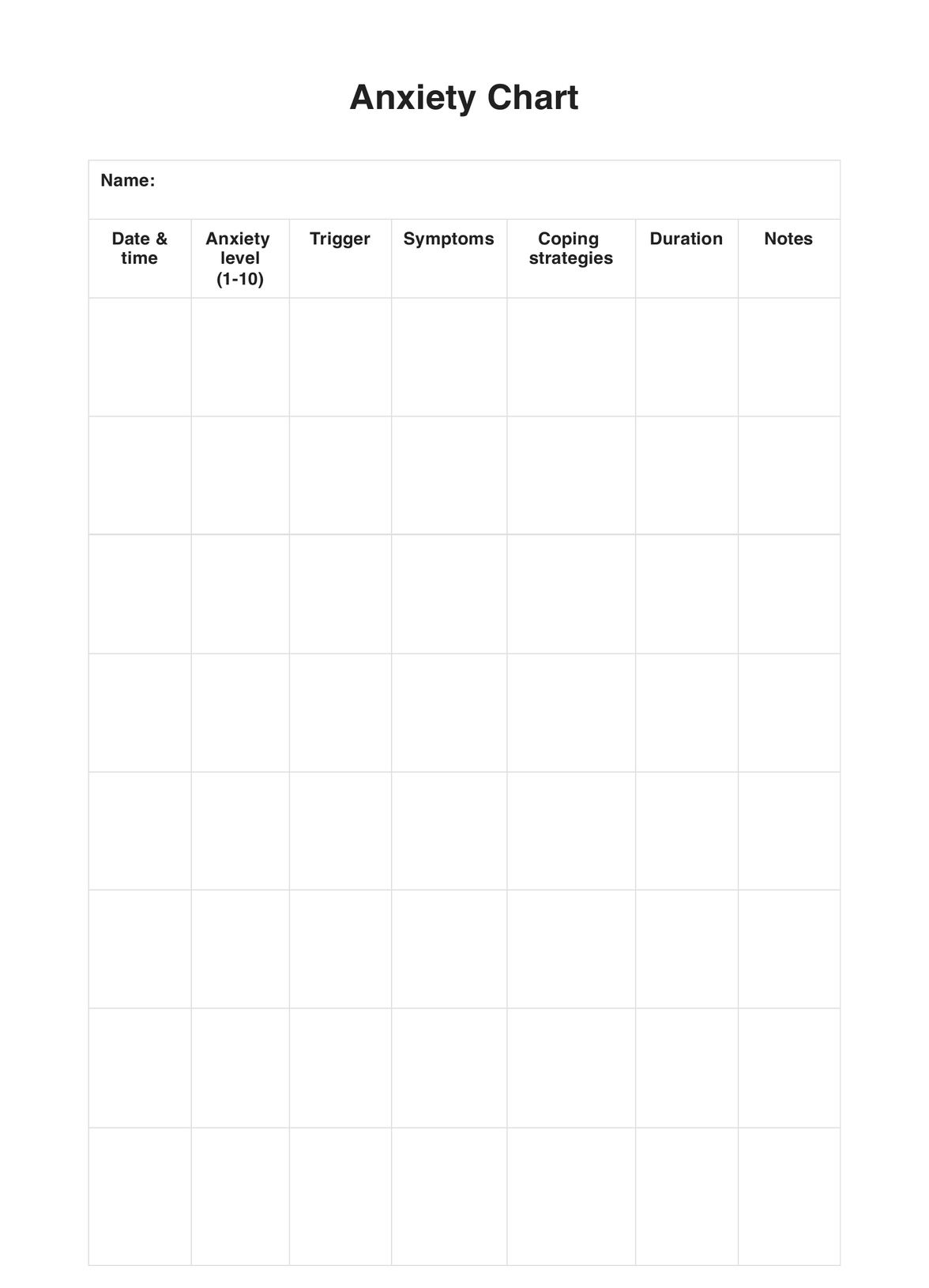Anxiety Charts are used by clinicians, such as therapists and psychologists, to track a patient's progress while they work through their treatment plan. They provide an easy way for clinicians to keep track of the patient's symptoms and how they respond to different interventions over time.

Anxiety Chart
Download our free Anxiety Chart to help clients track their anxiety over time and understand triggers. Includes an example to get you started!
Anxiety Chart Template
Commonly asked questions
Anxiety Charts can be used in any setting to help patients develop strategies to manage their anxiety. They provide the clinician with a visual record of the patient's progress and can also be used as an educational tool for the patient, providing helpful information about their symptoms.
Anxiety Charts provide the clinician with an invaluable tool for tracking and monitoring a patient's progress. They also offer the patient a way to track their progress, creating an understanding of their condition and empowering them to take control of their emotional well-being.
EHR and practice management software
Get started for free
*No credit card required
Free
$0/usd
Unlimited clients
Telehealth
1GB of storage
Client portal text
Automated billing and online payments











